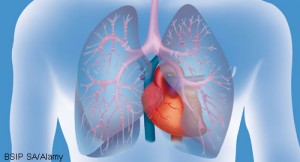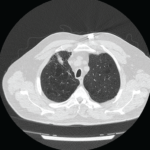 ACR CONVERGENCE 2021—Pulmonary disease is a potentially serious, yet oft-underdiagnosed complication of Sjögren’s syndrome. Fortunately, Consensus Guidelines for the Evaluation and Management of Pulmonary Disease in Sjögren’s were released in 2021.1 The guidelines were initiated and supported by the Sjögren’s Foundation. Pulmonologists, rheumatologists and patients worked together to finalize the document.
ACR CONVERGENCE 2021—Pulmonary disease is a potentially serious, yet oft-underdiagnosed complication of Sjögren’s syndrome. Fortunately, Consensus Guidelines for the Evaluation and Management of Pulmonary Disease in Sjögren’s were released in 2021.1 The guidelines were initiated and supported by the Sjögren’s Foundation. Pulmonologists, rheumatologists and patients worked together to finalize the document.
During ACR Convergence 2021, a pulmonologist and a rheumatologist, both of whom helped craft the guidelines, discussed the diagnosis and management of pulmonary manifestations of Sjögren’s syndrome.
Pulmonary Manifestations of Sjögren’s Syndrome
Approximately one in six patients living with Sjögren’s syndrome has pulmonary involvement, which is associated with higher mortality and lower quality of life compared with patients with Sjogren’s syndrome who do not have pulmonary involvement. Augustine S. Lee, MD, MSc, FCCP, chair of the Division of Pulmonary Medicine, Mayo Clinic Florida, Jacksonville, reviewed common pulmonary manifestations in Sjögren’s syndrome and the recommended approach.
1. Sjögren’s syndrome with no respiratory symptoms
“Screening for pulmonary disease is of utmost importance [because] 10–20% of patients [with Sjögren’s syndrome] will have clinically relevant pulmonary involvement,” Dr. Lee said.
Screening should include a careful respiratory history, cardiopulmonary exam, a baseline chest radiograph and baseline complete pulmonary function testing (PFT; i.e., spirometry, lung volumes, diffusing capacity of the lungs for carbon monoxide [DLCO]), and resting and exercise oxygen saturation readings.
2. Sjögren’s syndrome with a cough
In a patient with Sjögren’s syndrome who has pulmonary symptoms, the recommendation is to obtain high-resolution computed tomography (CT) of the chest—as opposed to a chest radiograph—in addition to complete PFTs.
“[A chest radiograph] may miss 10–15% of significant disorders, such as interstitial lung disease [ILD], neoplasms or bronchiolar diseases,” Dr. Lee said. “Of note, the [high-resolution CT] should include expiratory views. This is particularly important because of the potential for small airway involvement in Sjögren’s syndrome, which standard inspiratory views on the [high-resolution CT] and PFTs will not detect. Prone imaging should also be considered if needed to differentiate dependent subpleural atelectasis from ILD.”2
Dr. Lee continued, “Although evaluation for more nefarious etiologies is paramount, the most likely cause of cough in Sjögren’s syndrome remains xerotrachea. Common associations, such as gastroesophageal reflux disorder, asthma and rhinitis, should also be considered.”
3. Sjögren’s syndrome with ILD
About 25% of patients with Sjögren’s syndrome will have ILD, with nonspecific interstitial pneumonia (NSIP) being the most common subtype (45%). Fortunately, lung biopsy is typically not required for diagnosis, and treatment is based on the pattern of ILD, symptoms, degree of lung dysfunction and clinical course.3
“The guidelines provide flow-diagramed specifics,” said Dr. Lee, “but in general, patients should be monitored with PFTs and pulse oximetry. Supportive measures, such as oxygen and pulmonary rehabilitation, are important parts of therapy. I consider adding anti-fibrotics to patients with clear fibrotic patterns [e.g., usual interstitial pneumonia] or after failing or progressing despite standard anti-inflammatory therapies. Transplant should be entertained early in patients who are rapidly deteriorating or in patients with significant oxygen requirements.”

